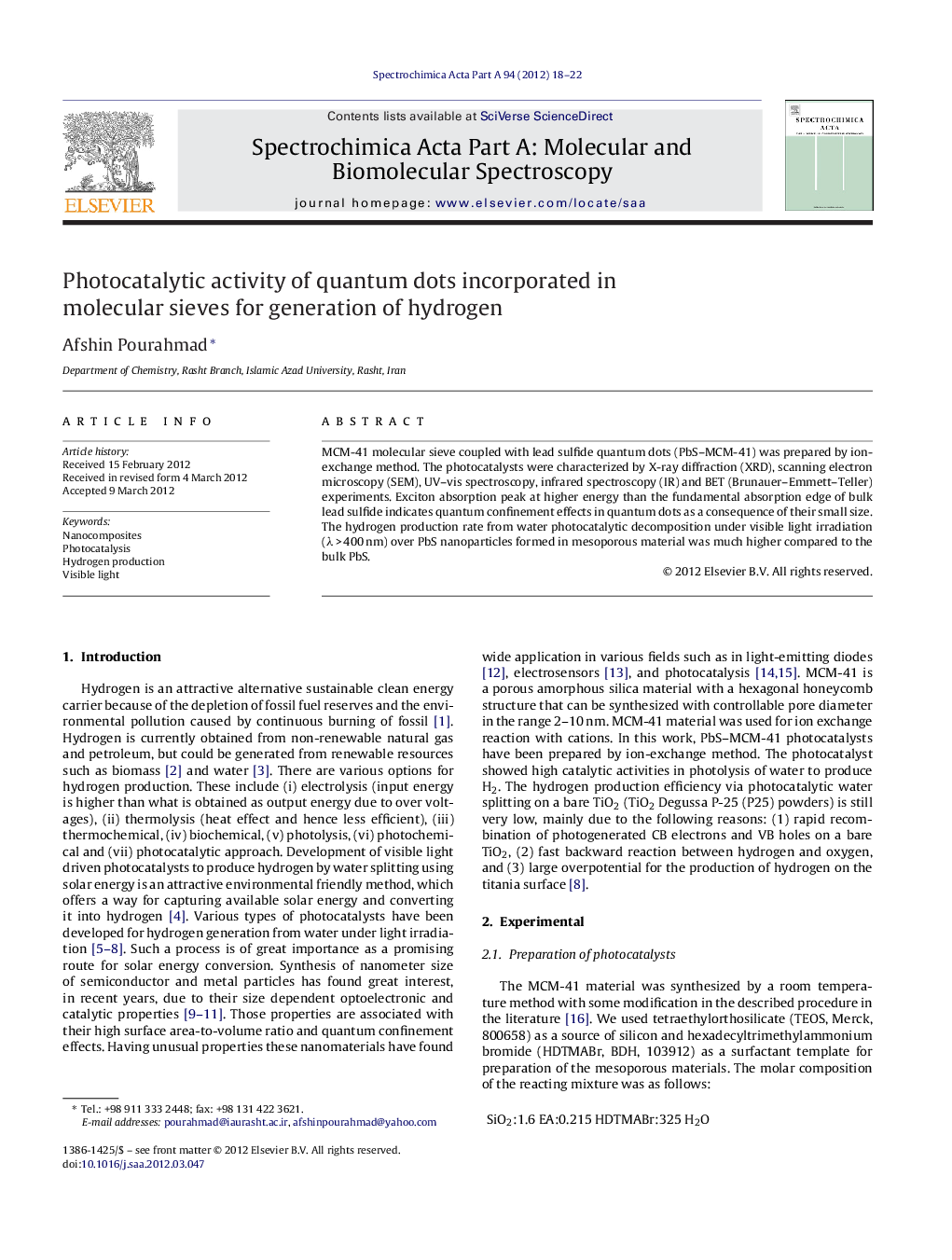| Article ID | Journal | Published Year | Pages | File Type |
|---|---|---|---|---|
| 1231398 | Spectrochimica Acta Part A: Molecular and Biomolecular Spectroscopy | 2012 | 5 Pages |
MCM-41 molecular sieve coupled with lead sulfide quantum dots (PbS–MCM-41) was prepared by ion-exchange method. The photocatalysts were characterized by X-ray diffraction (XRD), scanning electron microscopy (SEM), UV–vis spectroscopy, infrared spectroscopy (IR) and BET (Brunauer–Emmett–Teller) experiments. Exciton absorption peak at higher energy than the fundamental absorption edge of bulk lead sulfide indicates quantum confinement effects in quantum dots as a consequence of their small size. The hydrogen production rate from water photocatalytic decomposition under visible light irradiation (λ > 400 nm) over PbS nanoparticles formed in mesoporous material was much higher compared to the bulk PbS.
Graphical abstractPbS–MCM-41 photocatalysts have been prepared by ion-exchange method. The photocatalyst showed high catalytic activities in photolysis of water to produce H2.Figure optionsDownload full-size imageDownload as PowerPoint slideHighlights► PbS nanostructures were prepared via a simple ion exchange process. ► The PbS–MCM-41 photocatalyst has shown a higher activity compared to bulk PbS. ► The photocatalysts were characterized by XRD, SEM, UV–vis, IR and BET. ► Hydrogen can be generated by photolysis of water.
